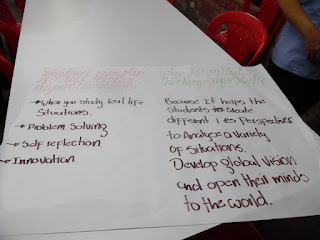On a whim, Lauren, Sandra and I bought tickets to Cartagena. It was a last minute decision and 24 hours before we were to depart on Viva Colombia, we booked our trip.
Here was the plan - to spend 48 hours in Cartagena on a whirlwind tour of the city. Conveniently and coincidently, it was also Sandra's mother's birthday on Friday night and we went along to celebrate.
On Friday afternoon we jumped on a 45 minute flight to Cartagena. We were greeted by intense heat and humidity along with the colors and music of the city. We drove to Sandra's brother's apartment in Manga and surprised her mother and father with our visit. Sandra's family was incredibly kind to us. They set up air mattresses for us to sleep on, fed us and made sure we were well taken care of all weekend.
That evening we went to the old, walled city in Cartagena and wandered the myriad of winding streets confined within the city walls. We sat down in one of the huge squares, reminiscent of the grand plaza in Venice, and were romanced by the musicians, dancers and light shows.
After a delicious breakfast of arepas con huevos homemade by Sandra's mother, we headed back to the walled city where we quickly had a second breakfast of fresh fruits. The fruits and vegetables are incredible in Cartagena with street vendors actively selling their produce.
We spent hours wandering the old city enjoying the people, vendors and beautiful architecture.
We stopped as often as we could to take advantage of the refreshing juices that were available throughout the city. This happened to be my favorite jugo de mango!
We met up with two other TGC fellows who were based in Cartagena and headed to the Castle de San Felipe. This was an outpost used to defend the city. There are incredible tunnels and catacombs that lead from the castle to the sea in case a quick departure from the city was needed. We had fun exploring the tunnels and admiring the views.
Afterwards we went back to the old city to watch the sunset and ate a delicious meal celebrating the seafood that is so readily available in Cartagena.
The following morning we wandered back through the old city for some last minute food and souvenirs before spending a wonderful afternoon with Sandra´s family. We discussed politics, the upcoming referendum on the peace accords, Colombian history and the future elections in Colombia. It was wonderful speaking with Sandra's father about the changes he has seen in Colombia in the past fifty years.
We had a wonderful time in Cartagena and reluctantly made our way back to the airport to head back to Bucaramanga.
















































